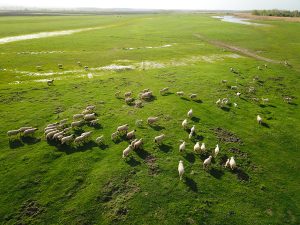In mid-2022 Mecardo looked at the international supply of sheep meat (albeit from a limited number of countries) showing how lower supply had positively correlated with the increase in US dollar lamb price in the decade to 2011, with no clear trend in price evident since then. This article updates the numbers to see how the correlations have fared in recent years.
The June 2022 article went through the history of supply and
price since the 1990s, so there is no need to reprise that in this article,
suffice it to say that when the industry considers sheep meat supply it needs
to think more widely than Australia. A point to note about the 2024 estimates
in this article is that they are based only on data for the first two to three
months of 2024, therefore they are only rough estimates at best. This analysis
helps to explain what has happened but does not provide a predictor for future
sheep meat prices, as that requires predicting supply.
Australia tends to be the main swing producer of sheep meat
from the selection of countries (Australia, New Zealand, main European
countries, the UK and the USA) considered in this analysis, except for
occasional step changes in production in other countries due to disease
outbreaks such as Foot and Mouth Disease or simply shrinkage in a flock. It is
a similar story for wool production, where Australia is the key swing producer.
Figure 1 shows a NSW saleyard trade lamb price series, in US
cents per kg, from the mid-1980s onwards through to 2023 including estimates
for 2024 based on early 2024 numbers to date – (with values in reverse). It
also includes the combined sheep meat (lamb and mutton) production from the two
big exporters (Australia and New Zealand) along with the USA, UK and key
producing countries in the European Union (EU).
Mutton and lamb production have been combined as not all
countries report the two sheep meats separately. Sheep meat supply started to
pick up in 2022 and then rose strongly in 2023, with the US dollar lamb price
following the lead of supply and dropping as is expected from the correlation
of these two series in recent decades. At this early stage of 2024 supply is
holding at 2023 levels, so the US dollar lamb price remains under pressure.
Figure 2 compares the year-on-year change in sheep meat
supply used in Figure 1 with the year-on-year change in the basis (difference)
between the Australian lamb price and the US Live Cattle price. The US live
cattle price is used as a proxy for an international beef price. The logic here
is that change in the bigger red meat market will have some influence on the
sheep meat market, so by looking at the sheep meat basis to beef we can remove
some of this effect. As for Figure 2, there are no surprises here, with the
significant increase in sheep meat supply corresponding with a significant drop
in the lamb to live cattle basis.
What does it mean?
The recent drop in lamb and mutton prices can be sheeted home to Australian increased sheep meat production. It is early days for 2024 but of the other regions considered in this article, all bar the USA are showing a decrease in sheep meat production, helping offset the early 2024 Australian volumes. Good seasonal conditions from the winter onwards in the southern sheep regions are the best bet for Australian sheep meat production to shrink, thereby allowing lamb and mutton prices to increase.
Have any questions or comments?
Key Points
- Since 2021 the rise in the international supply of sheep meat has been driven by Australian production.
- The increase in sheep meat production dovetails with the drop in lamb price.
- The change in sheep meat production also explains the drop in the lamb to US Live Cattle basis.
Click on figure to expand
Click on figure to expand
Data sources: MLA, RBA, ABS, Eurostat, USDA, DEFRA, Statistics NZ, CME Group, ICS, Mecardo














